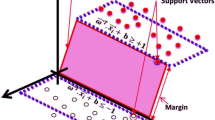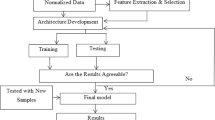Abstract
Anaphylaxis is a rapid allergic reaction that may cause sudden death. Currently, postmortem diagnosis of anaphylactic shock is sometimes difficult and often achieved through exclusion. The aim of our study was to investigate whether Fourier transform infrared (FTIR) microspectroscopy combined with pattern recognition methods would be complementary to traditional methods and provide a more accurate postmortem diagnosis of fatal anaphylactic shock. First, the results of spectral peak area analysis showed that the pulmonary edema fluid of the fatal anaphylactic shock group was richer in protein components than the control group, which included mechanical asphyxia, brain injury, and acute cardiac death. Subsequently, principle component analysis (PCA) was performed and showed that the anaphylactic shock group contained more turn and α-helix protein structures as well as less tyrosine-rich proteins than the control group. Ultimately, a partial least-square discriminant analysis (PLS-DA) model combined with a variables selection method called the genetic algorithm (GA) was built and demonstrated good separation between these two groups. This pilot study demonstrates that FTIR microspectroscopy has the potential to be an effective aid for postmortem diagnosis of fatal anaphylactic shock.






Similar content being viewed by others
References
Stone SF, Phillips EJ, Wiese MD, Heddle RJ, Brown SG (2014) Immediate-type hypersensitivity drug reactions. Br J Clin Pharmacol 78(1):1–13. https://doi.org/10.1111/bcp.12297
Shen Y, Li L, Grant J, Rubio A, Zhao Z, Zhang X, Zhou L, Fowler D (2009) Anaphylactic deaths in Maryland (United States) and Shanghai (China): a review of forensic autopsy cases from 2004 to 2006. Forensic Sci Int 186(1–3):1–5. https://doi.org/10.1016/j.forsciint.2008.12.007
Reggiani Bonetti L, Maccio L, Trani N, Radheshi E, Palmiere C (2015) Splenic hypereosinophilia in anaphylaxis-related death: different assessments depending on different types of allergens? Int J Legal Med 129(1):97–103. https://doi.org/10.1007/s00414-014-1004-2
Nishio H, Takai S, Miyazaki M, Horiuchi H, Osawa M, Uemura K, Yoshida K, Mukaida M, Ueno Y, Suzuki K (2005) Usefulness of serum mast cell-specific chymase levels for postmortem diagnosis of anaphylaxis. Int J Legal Med 119(6):331–334. https://doi.org/10.1007/s00414-005-0524-1
Da Broi U, Moreschi C (2011) Post-mortem diagnosis of anaphylaxis: a difficult task in forensic medicine. Forensic Sci Int 204(1–3):1–5. https://doi.org/10.1016/j.forsciint.2010.04.039
Cecchi R (2016) Diagnosis of anaphylactic death in forensics: review and future perspectives. Legal Med 22:75–81. https://doi.org/10.1016/j.legalmed.2016.08.006
Pumphrey RS, Roberts IS (2000) Postmortem findings after fatal anaphylactic reactions. J Clin Pathol 53(4):273–276
Hashim SW, Kay HR, Hammond GL, Kopf GS, Geha AS (1984) Noncardiogenic pulmonary edema after cardiopulmonary bypass: an anaphylactic reaction to fresh frozen plasma. Am J Surg 147(4):560–564
Fein A, Grossman RF, Jones JG, Overland E, Pitts L, Murray JF, Staub NC (1979) The value of edema fluid protein measurement in patients with pulmonary edema. Am J Med 67(1):32
Ware LB, Fremont RD, Bastarache JA, Calfee CS, Matthay MA (2010) Determining the etiology of pulmonary edema by the edema fluid-to-plasma protein ratio. Eur Respir J 35(2):331–337
Wang Q, Ishikawa T, Michiue T, Zhu BL, Guan DW, Maeda H (2012) Molecular pathology of pulmonary edema after injury in forensic autopsy cases. Int J Legal Med 126(6):875–882. https://doi.org/10.1007/s00414-012-0758-7
Wang Q, Ishikawa T, Michiue T, Zhu BL, Guan DW, Maeda H (2013) Molecular pathology of pulmonary edema in forensic autopsy cases with special regard to fatal hyperthermia and hypothermia. Forensic Sci Int 228(1–3):137–141. https://doi.org/10.1016/j.forsciint.2013.03.007
Du Y, Jin HN, Zhao R, Zhao D, Xue Y, Zhu BL, Guan DW, Xie XL, Wang Q (2016) Molecular pathology of pulmonary edema in forensic autopsy cases with special regard to fatal methamphetamine intoxication. J Forensic Sci 61(6):1531–1537. https://doi.org/10.1111/1556-4029.13199
Trevisan J, Angelov PP, Carmichael PL, Scott AD, Martin FL (2012) Extracting biological information with computational analysis of Fourier-transform infrared (FTIR) biospectroscopy datasets: current practices to future perspectives. Analyst 137(14):3202–3215. https://doi.org/10.1039/c2an16300d
Kendall C, Isabelle M, Bazanthegemark F, Hutchings J, Orr L, Babrah J, Baker R, Stone N (2009) Vibrational spectroscopy: a clinical tool for cancer diagnostics. Analyst 134(6):1029–1045
Nallala J, Diebold MD, Gobinet C, Bouche O, Sockalingum GD, Piot O, Manfait M (2014) Infrared spectral histopathology for cancer diagnosis: a novel approach for automated pattern recognition of colon adenocarcinoma. Analyst 139(16):4005–4015. https://doi.org/10.1039/c3an01022h
Ly E, Piot O, Durlach A, Bernard P, Manfait M (2009) Differential diagnosis of cutaneous carcinomas by infrared spectral micro-imaging combined with pattern recognition. Analyst 134(6):1208–1214
Walsh MJ, Singh MN, Stringfellow HF, Pollock HM, Hammiche A, Grude O, Fullwood NJ, Pitt MA, Martinhirsch PL, Martin FL (2008) FTIR microspectroscopy coupled with two-class discrimination segregates markers responsible for inter- and intra-category variance in exfoliative cervical cytology. Biomark Insights 3(6):179–189
Kumar S, Desmedt C, Larsimont D, Sotiriou C, Goormaghtigh E (2013) Change in the microenvironment of breast cancer studied by FTIR imaging. Analyst 138(14):4058–4065. https://doi.org/10.1039/c3an00241a
Verdonck M, Denayer A, Delvaux B, Garaud S, De Wind R, Desmedt C, Sotiriou C, Willard-Gallo K, Goormaghtigh E (2016) Characterization of human breast cancer tissues by infrared imaging. Analyst 141(2):606–619. https://doi.org/10.1039/c5an01512j
Bergner N, Romeike BF, Reichart R, Kalff R, Krafft C, Popp J (2013) Tumor margin identification and prediction of the primary tumor from brain metastases using FTIR imaging and support vector machines. Analyst 138(14):3983–3990. https://doi.org/10.1039/c3an00326d
Patel II, Trevisan J, Singh PB, Nicholson CM, Krishnan RK, Matanhelia SS, Martin FL (2011) Segregation of human prostate tissues classified high-risk (UK) versus low-risk (India) for adenocarcinoma using Fourier-transform infrared or Raman microspectroscopy coupled with discriminant analysis. Anal Bioanal Chem 401(3):969–982
Crane NJ, Bartick EG, Perlman RS, Huffman S (2007) Infrared spectroscopic imaging for noninvasive detection of latent fingerprints. J Forensic Sci 52(1):48–53. https://doi.org/10.1111/j.1556-4029.2006.00330.x
Chen T, Schultz ZD, Levin IW (2009) Infrared spectroscopic imaging of latent fingerprints and associated forensic evidence. Analyst 134(9):1902–1904. https://doi.org/10.1039/b908228j
Dirwono W, Park JS, Agustin-Camacho MR, Kim J, Park HM, Lee Y, Lee KB (2010) Application of micro-attenuated total reflectance FTIR spectroscopy in the forensic study of questioned documents involving red seal inks. Forensic Sci Int 199(1–3):6–8. https://doi.org/10.1016/j.forsciint.2010.02.009
Flynn K, O'Leary R, Roux C, Reedy BJ (2006) Forensic analysis of bicomponent fibers using infrared chemical imaging. J Forensic Sci 51(3):586–596. https://doi.org/10.1111/j.1556-4029.2006.00116.x
Chan KL, Kazarian SG (2006) Detection of trace materials with Fourier transform infrared spectroscopy using a multi-channel detector. Analyst 131(1):126–131. https://doi.org/10.1039/b511243e
Yang TT, Weng SF, Zheng N, Pan QH, Cao HL, Liu L, Zhang HD, Mu d W (2011) Histopathology mapping of biochemical changes in myocardial infarction by Fourier transform infrared spectral imaging. Forensic Sci Int 207(1–3):e34–e39. https://doi.org/10.1016/j.forsciint.2010.12.005
Yang T, He G, Zhang X, Chang L, Zhang H, Ripple MG, Fowler DR, Li L (2014) Preliminary study on diffuse axonal injury by Fourier transform infrared spectroscopy histopathology imaging. J Forensic Sci 59(1):231–235. https://doi.org/10.1111/1556-4029.12290
Zhang J, Lin W, Lin H, Wang Z, Dong H (2017) Identification of skin electrical injury using infrared imaging: a possible complementary tool for histological examination. PLoS One 12(1):e0170844. https://doi.org/10.1371/journal.pone.0170844
Baker MJ, Hussain SR, Lovergne L, Untereiner V, Hughes C, Lukaszewski RA, Thiefin G, Sockalingum GD (2016) Developing and understanding biofluid vibrational spectroscopy: a critical review. Chem Soc Rev 45(7):1803–1818. https://doi.org/10.1039/c5cs00585j
Erukhimovitch V, Talyshinsky M, Souprun Y, Huleihel M (2006) FTIR spectroscopy examination of leukemia patients plasma. Vib Spectrosc 40(1):40–46
Ahmed SSSJ, Santosh W, Kumar S, Christlet THT (2010) Neural network algorithm for the early detection of Parkinson’s disease from blood plasma by FTIR micro-spectroscopy. Vib Spectrosc 53(2):181–188
Gajjar K, Trevisan J, Owens G, Keating PJ, Wood NJ, Stringfellow HF, Martinhirsch PL, Martin FL (2013) Fourier-transform infrared spectroscopy coupled with a classification machine for the analysis of blood plasma or serum: a novel diagnostic approach for ovarian cancer. Analyst 138(14):3917
Staniszewskaslezak E, Fedorowicz A, Kramkowski K, Leszczynska A, Chlopicki S, Baranska M, Malek K (2015) Plasma biomarkers of pulmonary hypertension identified by Fourier transform infrared spectroscopy and principal component analysis. Analyst 140(7):2273–2279
Zelig U, Barlev E, Bar O, Gross I, Flomen F, Mordechai S, Kapelushnik J, Nathan I, Kashtan H, Wasserberg N (2015) Early detection of breast cancer using total biochemical analysis of peripheral blood components: a preliminary study. BMC Cancer 15(1):408
Staniszewskaslezak E, Mateuszuk L, Chlopicki S, Baranska M, Malek K (2016) Alterations in plasma biochemical composition in NO deficiency induced by L-NAME in mice analysed by Fourier Transform Infrared Spectroscopy. J Biophotonics 9(10):1098
Staniszewskaslezak E, Wiercigroch E, Fedorowicz A, Buczek E, Mateuszuk L, Baranska M, Chlopicki S, Malek K (2017) A possible FTIR-based plasma fingerprint of ACE-I induced reversal of endothelial dysfunction in diabetic mice. J Biophotonics. https://doi.org/10.1002/jbio.201700044
Barry L, Workman JJ (2004) Chemometrics. Anal Chem 76(12):3365–3371
Bro R, Smilde AK (2014) Principal component analysis. Anal Methods 6(9):2812. https://doi.org/10.1039/c3ay41907j
Ballabio D, Consonni V (2013) Classification tools in chemistry. Part 1: linear models. PLS-DA. Anal Methods 5(16):3790. https://doi.org/10.1039/c3ay40582f
Leardi R, González AL (1998) Genetic algorithms applied to feature selection in PLS regression: how and when to use them. Chemom Intell Lab Syst 41(2):195–207
Helm D, Labischinski H, Schallehn G, Naumann D (1991) Classification and identification of bacteria by Fourier-transform infrared spectroscopy. J Gen Microbiol 137(1):69
Kobayashi T, Nitta K, Ganzuka M, Inui S, Grossmann G, Robertson B (1991) Inactivation of exogenous surfactant by pulmonary edema fluid. Pediatr Res 29(4):353–356
Barth A (2007) Infrared spectroscopy of proteins. Biochim Biophys Acta 1767(9):1073–1101. https://doi.org/10.1016/j.bbabio.2007.06.004
Baker MJ, Trevisan J, Bassan P, Bhargava R, Butler HJ, Dorling KM, Fielden PR, Fogarty SW, Fullwood NJ, Heys KA, Hughes C, Lasch P, Martin-Hirsch PL, Obinaju B, Sockalingum GD, Sule-Suso J, Strong RJ, Walsh MJ, Wood BR, Gardner P, Martin FL (2014) Using Fourier transform IR spectroscopy to analyze biological materials. Nat Protoc 9(8):1771–1791. https://doi.org/10.1038/nprot.2014.110
Yang H, Yang S, Kong J, Dong A, Yu S (2015) Obtaining information about protein secondary structures in aqueous solution using Fourier transform IR spectroscopy. Nat Protoc 10(3):382–396. https://doi.org/10.1038/nprot.2015.024
Gabashvili IS, Menikh A, Ségui J, Fragata M (1998) Protein structure of photosystem II studied by FT-IR spectroscopy. Effect of digalactosyldiacylglycerol on the tyrosine side chain residues. J Mol Struct 444(1–3):123–133
Darwish SM (2010) Spectroscopic study of propofol binding to human serum albumin. Biophys Rev Lett 05(04):209–226. https://doi.org/10.1142/s1793048010001202
de Almeida MR, Correa DN, Rocha WFC, Scafi FJO, Poppi RJ (2013) Discrimination between authentic and counterfeit banknotes using Raman spectroscopy and PLS-DA with uncertainty estimation. Microchem J 109:170–177. https://doi.org/10.1016/j.microc.2012.03.006
Zhang J, Li B, Wang Q, Li C, Zhang Y, Lin H, Wang Z (2017) Characterization of postmortem biochemical changes in rabbit plasma using ATR-FTIR combined with chemometrics: a preliminary study. Spectrochim Acta A 173:733–739. https://doi.org/10.1016/j.saa.2016.10.041
Mistek E, Lednev IK (2015) Identification of species’ blood by attenuated total reflection (ATR) Fourier transform infrared (FT-IR) spectroscopy. Anal Bioanal Chem 407(24):7435–7442. https://doi.org/10.1007/s00216-015-8909-6
Jr JBS, Hattori T, Ray CS, Bove AA, Cianci P (2001) Pulmonary edema associated with scuba diving : case reports and review. Chest 120(5):1686–1694
Funding
This project was supported by grants from the National Natural Science Foundation of China (81730056, 81722027, 81471819, 81601645 and 81671869), the National Key R&D Program of China (2016YFC0800701), and the Science and Technology Committee of Shanghai Municipality (17DZ2273200 and 16DZ2290900).
Author information
Authors and Affiliations
Corresponding authors
Ethics declarations
Conflict of interest
The authors declare that they have no conflict of interest.
Electronic supplementary material
ESM 1
(PDF 366 kb)
Rights and permissions
About this article
Cite this article
Lin, H., Luo, Y., Wang, L. et al. Identification of pulmonary edema in forensic autopsy cases of fatal anaphylactic shock using Fourier transform infrared microspectroscopy. Int J Legal Med 132, 477–486 (2018). https://doi.org/10.1007/s00414-017-1721-4
Received:
Accepted:
Published:
Issue Date:
DOI: https://doi.org/10.1007/s00414-017-1721-4




